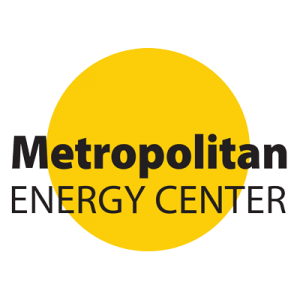Metropolitan Energy Center’s Blog
Stay up to date with clean energy trends, industry news, and local projects, all from MEC’s staff and connected experts.
Stay up to date with clean energy trends, industry news, and local projects, all from MEC’s staff and connected experts.
Metropolitan Energy Center (MEC) is a 501(c)(3) nonprofit organization. Our mission is to create resource efficiency, environmental health, and economic vitality in the Kansas City region – and beyond. Learn more about us and our programs.
Some images courtesy of all-free-download.com
This site uses cookies. By continuing to browse the site, you are agreeing to our use of cookies.
Accept settingsHide notification onlySettingsWe may request cookies to be set on your device. We use cookies to let us know when you visit our websites, how you interact with us, to enrich your user experience, and to customize your relationship with our website.
Click on the different category headings to find out more. You can also change some of your preferences. Note that blocking some types of cookies may impact your experience on our websites and the services we are able to offer.
These cookies are strictly necessary to provide you with services available through our website and to use some of its features.
Because these cookies are strictly necessary to deliver the website, refusing them will have impact how our site functions. You always can block or delete cookies by changing your browser settings and force blocking all cookies on this website. But this will always prompt you to accept/refuse cookies when revisiting our site.
We fully respect if you want to refuse cookies but to avoid asking you again and again kindly allow us to store a cookie for that. You are free to opt out any time or opt in for other cookies to get a better experience. If you refuse cookies we will remove all set cookies in our domain.
We provide you with a list of stored cookies on your computer in our domain so you can check what we stored. Due to security reasons we are not able to show or modify cookies from other domains. You can check these in your browser security settings.
We also use different external services like Google Webfonts, Google Maps, and external Video providers. Since these providers may collect personal data like your IP address we allow you to block them here. Please be aware that this might heavily reduce the functionality and appearance of our site. Changes will take effect once you reload the page.
Google Webfont Settings:
Google Map Settings:
Google reCaptcha Settings:
Vimeo and Youtube video embeds:

Updated Building Codes Mean Safer, Healthier Homes for Kansas City
Buildings, Educational, Energy Efficient Building, Home Energy Efficiency, News, Press ReleasesKANSAS CITY, MO (May 2, 2024) As Kansas City debates the future of its building codes, Metropolitan Energy Center (MEC) urges lawmakers to consider what’s at stake: the safety, health, […]
Performance Compliance Path Offers Sustainable Solution Amid Rising Home Building Costs
Buildings, Educational, Energy Efficient Building, Home Energy Efficiency, News, Press ReleasesKANSAS CITY, MO (April 25, 2024) Amid the rising steel frames and freshly poured foundations of Kansas City’s bustling construction sites, a pressing debate has emerged over the true cost […]
The More We Know, The More It’s Clear: Weatherization makes for better human health.
NewsNine out of ten breaths are taken indoors. It’s time we see efficient buildings as a key component to human health. Our children’s health and lives literally depend on it. […]
Metropolitan Energy Center awarded $400,000 from U.S. Department of Energy’s Buildings UP Prize
Buildings, Educational, Energy Efficient Building, Home Energy Efficiency, News, Press ReleasesA buildings upgrade prize supported community-led transformation of existing buildings into more energy-efficient spaces that are ready for clean energy. Looking to get involved in this initiative for healthy buildings? […]
MEC receives $6.8 million to Support Resilient and Efficient Building Codes and Policy
Buildings, Energy Efficient Building, Home Energy Efficiency, News, Press ReleasesJuly 12, 2023 Metropolitan Energy Center (MEC) is pleased to announce we were one of 27 applicants to get the green light from the U.S. Department of Energy to provide […]